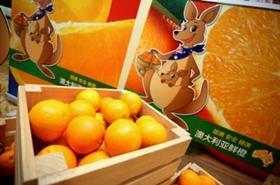
Australian fresh fruit and vegetable exporters have benefitted from recent free trade agreements (FTAs) secured with China, Japan and South Korea.
Revenue from fresh fruit exports has increase at an annualised 20 per cent in the five years to 2016/17, while ‘outdoor vegetable’ export revenue has increased at a annualised 8.9 per cent during the same time, according to new research from IBISWorld.
“Exporters in the citrus, banana and other fruit growing industry will generate A$689.6m in the current financial year,” Sam Johnson, IBISWorld senior industry analyst, said in a statement release 12 January.
“Australian almonds have performed particularly well, outpacing robust export growth across the overall industry. While FTAs have contributed to this success, almond growers have enjoyed larger harvests due to significant planting in 2006 and 2007. Water shortages that adversely affected Californian growers, the world’s largest supplier of almonds, also pushed global prices upwards over 2015 and 2016.”
Exports of outdoor vegetables will generate A$303.7m in 2016/17, he said, with asparagus exports to South Korea rising 123 per cent in value between 2014 and 2015.
“Other vegetables that have been successful in China, Japan and South Korea under the FTAs include lettuces, broccoli and broccolini, beans, spinach, cabbage, cauliflower, celery and peas,” added Johnson.
Positive outlook ahead
While tariffs will remain for some products from year to come, Johnson said that Australia growers had been forging supply links with wholesalers and retailers in China, Japan and South Korea, with will see those growers with strong established partnerships benefit when tariffs are eliminated.
“Australian fruit and vegetable exports to Asia, particularly to countries that have FTAs with Australia, will continue to enjoy healthy growth over the next five years and well into the future as Australia positions itself as a major food supplier for increasingly wealthy Asian consumers,” Johnson added.
“The FTAs have provided expansion opportunities in traditional export industries, and have opened areas in which Australia was previously uncompetitive or did not have market share.”



